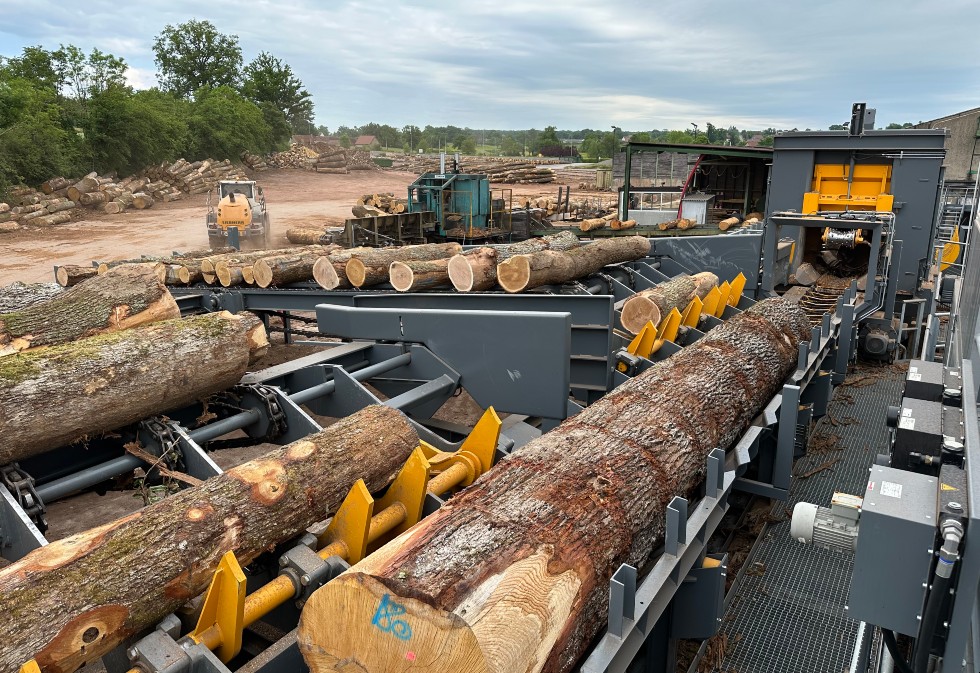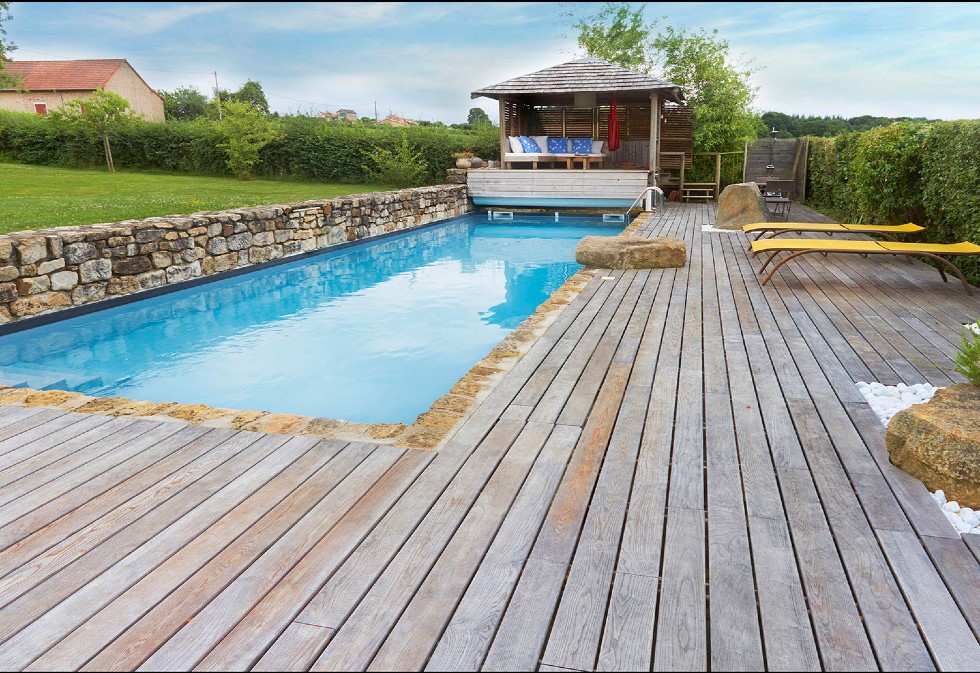Footbridge in Laval's train station: Ducerf’s oak chosen for an “exceptional” project!

Through its high-quality and durable oak products and the support given by its technicians, Ducerf has been fully involved in the creation of a new footbridge in the SNCF train station in Laval, France. This incredible project has helped the town develop, but it required considerable skill from everyone involved to get it done. Here’s the story...
“It is an exceptional project, through its scale, the anticipation surrounding it and its constraints!” These were the words of Raphaël Reverdy, the CEO of Limeul, the carpentry and framework company that worked on the project for the new footbridge in the Laval train station. Works to replace the structure, which provides access to the platform and connects the southern and northern parts of the SNCF station, had kept the residents and elected representatives of the Mayenne department's capital on their toes for over five years. Everyone was, therefore, relieved to celebrate its public opening just before Christmas on December 22 last year.
A 95-metre-long footbridge had to be installed above the railway tracks!
The structure is quite impressive. At 95 metres long and 8 metres wide, this vast and elegant, partially covered walkway made of wood, steel and concrete spans the rail lines. And, it was no mean feat, especially since its position imposed very specific constraints. “The construction manager obviously had to respect the general appearance requested by the Town Hall in line with their budget, but above all, respect SNCF’s timetable when installing it. The weekend envisaged for the final assembly was scheduled one or two years in advance, and no trains were allowed to run on the line.”
In addition to this “super well-timed” schedule, it required extreme precision to make sure that all the parts fitted perfectly together, despite them all being built individually on far-away sites. “It was a very European project”, said Raphaël Reverdy. “The architect, Dietmar Feichtinger, is Austrian. The manufacturer for all the metal structures is Italian. The wood, Ducerf's oak, came from Burgundy, as well as some from Britain and Finland, and the decking support rails were made in Lichtenstein!”
Oak, the architect’s priority and the installation contractor
It took several months of design and assembly work in the Limeul workshops in Rennes to compile and create all the wooden components, such as the framework that covers half of the footbridge’s width, the cladding and the pieces of decking. And it was oak that the architect prescribed for the job. His firm, which specialises in iconic projects for homes, the tertiary sector and even more specific works, like the protective wall to be built around the Eiffel Tower, also has a wealth of experience in designing footbridges. In particular, the firm also designed the structure that provides access to Mont Saint-Michel, an island commune in Normandy. “In most of their projects, they try to combine wood and steel”, Raphaël Reverdy described. “And oak is always the chosen species of wood.”
This choice was also strongly approved by Limeul, a company with 140 years of expertise and 70 employees. “In our company, 90% of the wood we transform to make frameworks is oak. For us, it is very important to work with this species because it has the best qualities, namely resistance and durability. Whenever we are told to work with Ipe or any other exotic materials, we try to tell the contracting authority or construction manager that we have high-quality French wood which has the same technical durability yet avoids depopulating orangutan habitats in Asian forests!”
Ducerf’s support staff were “very professional and dynamic, and excellent technicians”
In agreement with the general contractor, GTM Bâtiment, Limeul therefore opted for Ducerf’s products. 51 m3 of oak was supplied to build cladding from the Côtéparc® range (cladding behind the timber frame) and premium-quality decking (footbridge and steps). However, what Raphaël Reverdy particularly appreciated was the support he was given. “Honestly, I dealt with two employees at Ducerf, Thibault Chastagnier and Julien Guénard, who were very professional and dynamic, and very good technicians. With this type of project, things move very quickly. There are constraints and a deadline, but they supported us every day, whether it was about the expected quality of the wood, last-minute modifications or technical answers to urgent questions. I would really like to thank them!”
In August last year, it was finally time for the impressive assembly and lifting stages after the metal structure, which was split into four units, had arrived in Laval. It took three weeks, and fifteen Limeul employees, to complete just the framework, the wooden cladding encasing it and the zinc cover. Certain operations were carried out in the night during timeslots when the trains were not running. “The ramp-up during the final stretch went rather well”, Raphaël Reverdy praised earlier today. Everyone played their part, both the suppliers and the technicians from the various companies involved in the project.” It is a project whose finished result reflects everyone's involvement, and which has truly helped to redevelop the northern part of Laval. And with its newly renovated station, the town will be sure to build on its success from here on in.
Read more...
Photo credits: Dietmar Feichtinger Architectes, LIMEUL and Ducerf Group








